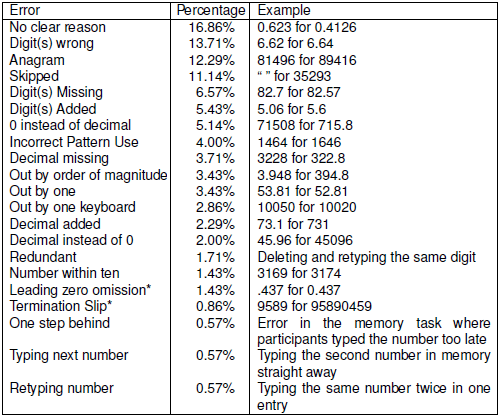Authors
Sarah Wiseman, Paul Cairns, & Anna Cox
Abstract
People are prone to errors in many aspects of life, including when entering numbers. The effects of these errors can be disastrous, for example when an incorrect number is entered when programming a medical infusion pump or when entering financial information into a system.
Designing better systems may help to prevent these errors however, in order to do this we need to understand far more about the types of errors being made, and their causes. Unfortunately, there are very few documented examples of number entry errors and thus many of the studies conducted so far rely upon modelled, not real world data.
This paper reports a study that was designed to elicit number entry errors and the subsequent process of creating a taxonomy of errors from the information gathered. A total of 350 errors were gathered. A method for classifying the errors using 21 codes is proposed — this is a significantly higher figure than previously suggested, showing that currently we underestimate the true number of such errors. These codes are then organised into a taxonomy similar to that of Zhang et al (2004).
We show how this taxonomy can be used to guide future research into number entry errors by suggesting experimental conditions needed to provoke certain errors. The taxonomy may also be used during the initial stages of design to help the designer understand the categories of errors that users are most likely to make and thus design accordingly.
Sample

The results of this study show how vast the range of types of number entry errors could be.
The most frequent error was 'No Clear Reason'; for example a participant typed the number 78 instead of 55. The next most frequent errors appear to be those caused by lapses.
Publication
2011, 25th BCS Conference on Human-Computer Interaction, July, pages 187-196
